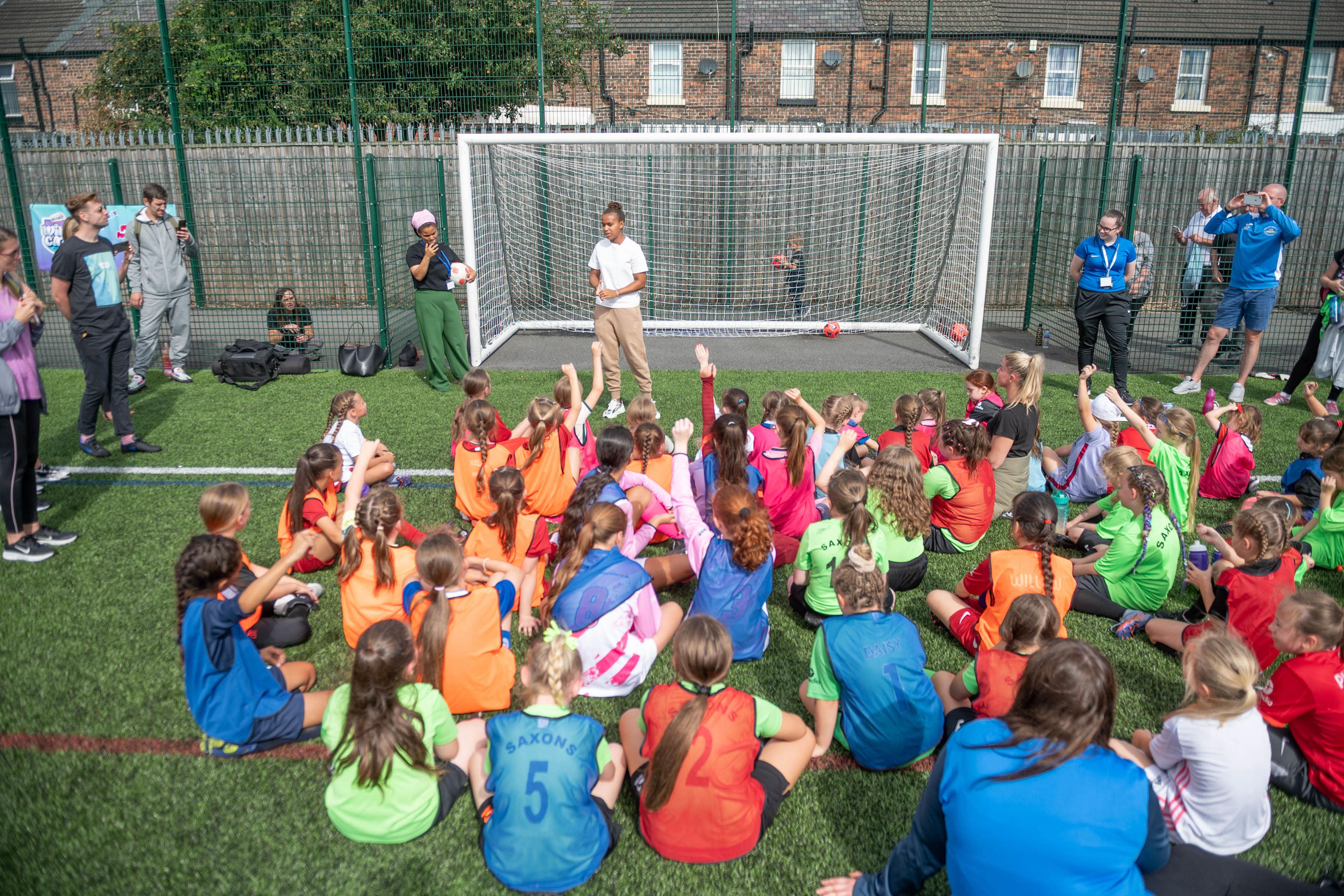Sport England survey shows big rise in number of girls playing football
The latest Active Lives survey for children and young people was published on Thursday morning.

Your support helps us to tell the story
From reproductive rights to climate change to Big Tech, The Independent is on the ground when the story is developing. Whether it's investigating the financials of Elon Musk's pro-Trump PAC or producing our latest documentary, 'The A Word', which shines a light on the American women fighting for reproductive rights, we know how important it is to parse out the facts from the messaging.
At such a critical moment in US history, we need reporters on the ground. Your donation allows us to keep sending journalists to speak to both sides of the story.
The Independent is trusted by Americans across the entire political spectrum. And unlike many other quality news outlets, we choose not to lock Americans out of our reporting and analysis with paywalls. We believe quality journalism should be available to everyone, paid for by those who can afford it.
Your support makes all the difference.The number of girls playing football in England has increased by 100,000 since 2017, even before the impact of the Lionesses’ Euro 2021 triumph is taken into account.
The Active Lives survey by grassroots funding body Sport England records levels of physical activity among children aged five to 16 for the 2021-22 academic year.
It found girls’ participation in football had improved dramatically since the first survey in 2017-18, with this year’s data gathered prior to Sarina Wiegman’s team winning the European Championship on July 31.
The survey found 98,000 more girls were classed as active – defined as doing 60 minutes or more of activity per day – compared to the most recent pre-pandemic survey in 2018-19.
It also found secondary school-age girls are now more active than at any point since the survey began five years ago.
Overall it found 3.4million children (47.2 per cent of those surveyed) were classed as active, meaning levels of activity on the whole had recovered to pre-pandemic levels. The survey found 219,000 more children were now classified as active compared to the 2020-21 academic year.
However, the data still highlighted areas of inequality.
Boys were five per cent more likely to be active than girls (50 per cent compared to 45 per cent), while a child’s socio-economic background remains a key factor.
Children from less affluent families were found to be 10 per cent less likely to be active than those from more affluent families – 42 per cent compared to 52 per cent.
The report says activity levels for different ethnicity groups are back in line with pre-pandemic levels with the exception of black children. Activity levels among black boys are 7.7 per cent below where they were in 2018-19.
The gender gap in activity levels remains largest among Asian boys and girls, where boys are 10 per cent more likely to be active than girls.
Sports Minister Stuart Andrew said: “It is very encouraging to see a surge of children and young people returning to enjoy the benefits of physical activity since the pandemic. But I am clear that more still needs to be done.
“Giving children the best start in life, and creating a welcoming environment to get into sport wherever they are, remains at the heart of what we stand for. That is why we are investing £230million in grassroots facilities, and developing a bold new sports strategy.
“We will continue to work with Sport England to ensure every child has the access to the right facilities and opportunities both in and out of school, to achieve their 60 minutes of activity a day.”
Sport England chief executive Tim Hollingsworth added: “This overall growth is positive but there’s more to do to help children and young people from all backgrounds enjoy the benefits of sport and physical activity.
“We have a long way to go still to change the overall level to where it needs to be. That’s why we will advocate for children and young people, particularly those facing inequalities and less likely to take part in sport and physical activity, to be given a voice in decisions which affect their experiences to help ensure that those experiences are positive.”